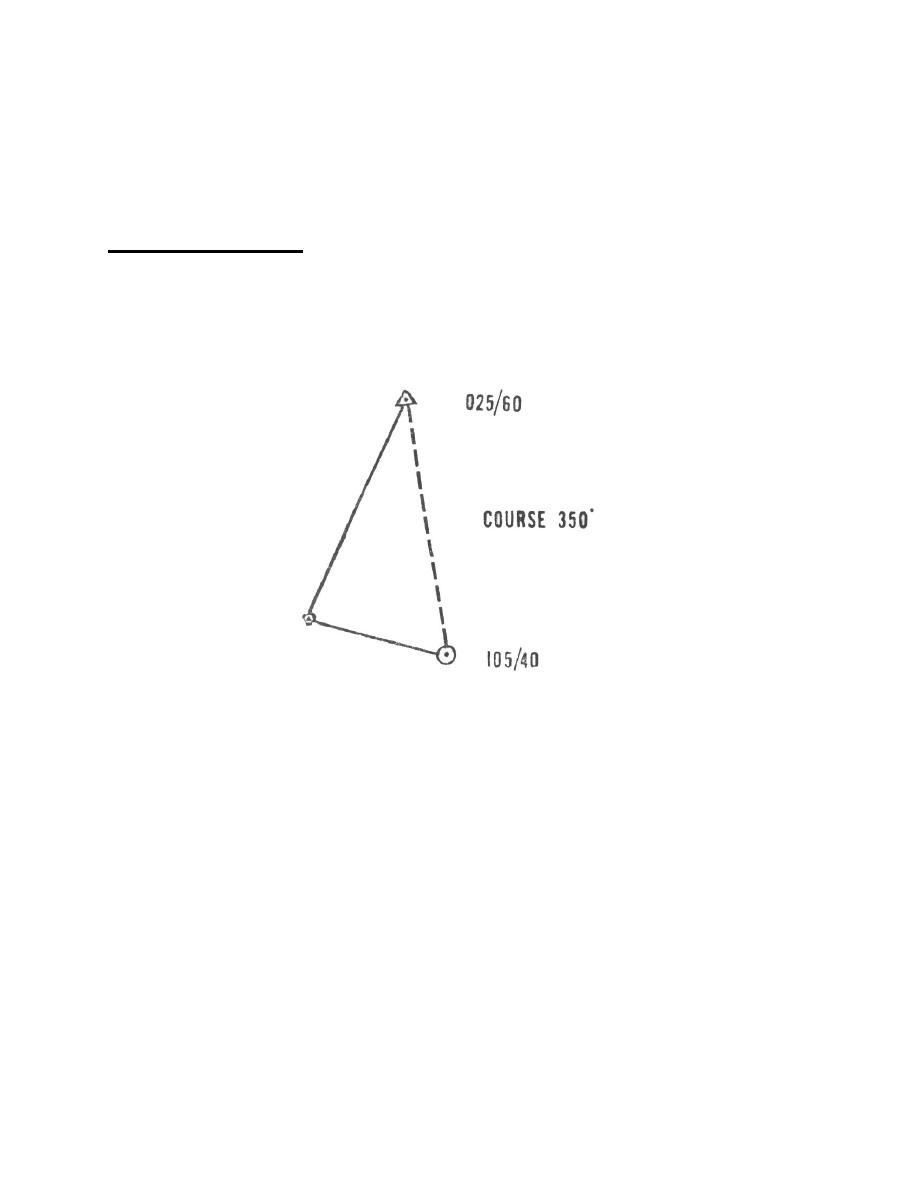 |
|||
|
|
|||
|
|
|||
| ||||||||||
|
|  INSTRUMENT NAVIGATION
Once airborne, you can roughly determine the existing crosswind by noting the trend in
heading changes needed to keep on course.
Example: In order to maintain a course of 090", you start heading 090, but soon must
come to 094, and finally to 096. Therefore, a right crosswind exists.
WIND COMPUTATION
By putting two concepts together (headings and ground speed differences) you can determine
the specific quadrant, (NE, SE, SW or NW) from which the wind is blowing.
Let's assume we're on the 105R/40 DME and want to go to the 025 R/60 DME and your
TAS is 420. The course is 350. (Figure 18)
Figure 18
Now let's assume that you find that your progress toward your desired point is slower than
you expected and that you constantly have to turn left to maintain your track. The combination
of these two factors indicates that you have a wind from the Northwest.
Note how this situation would look on the CR-2
TACAN POINT-TO-POINT 5-15
|
|
Privacy Statement - Press Release - Copyright Information. - Contact Us |